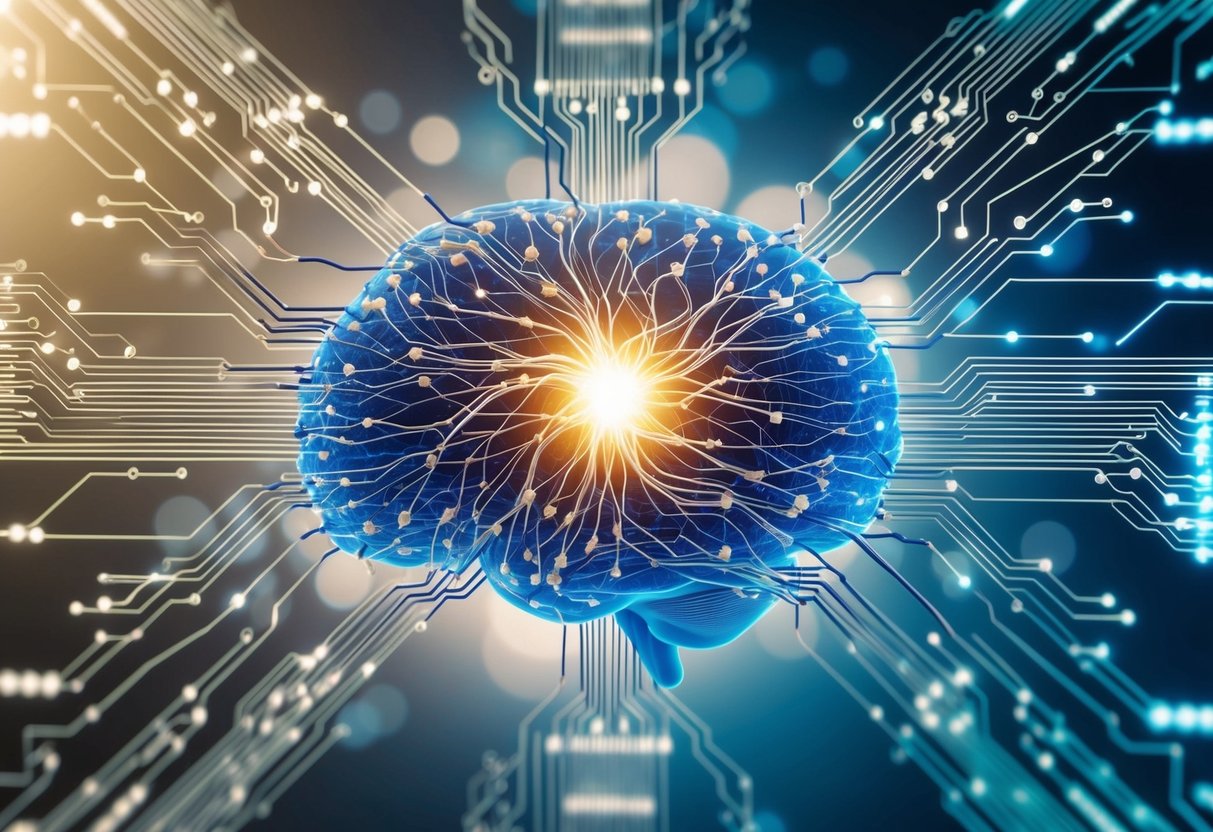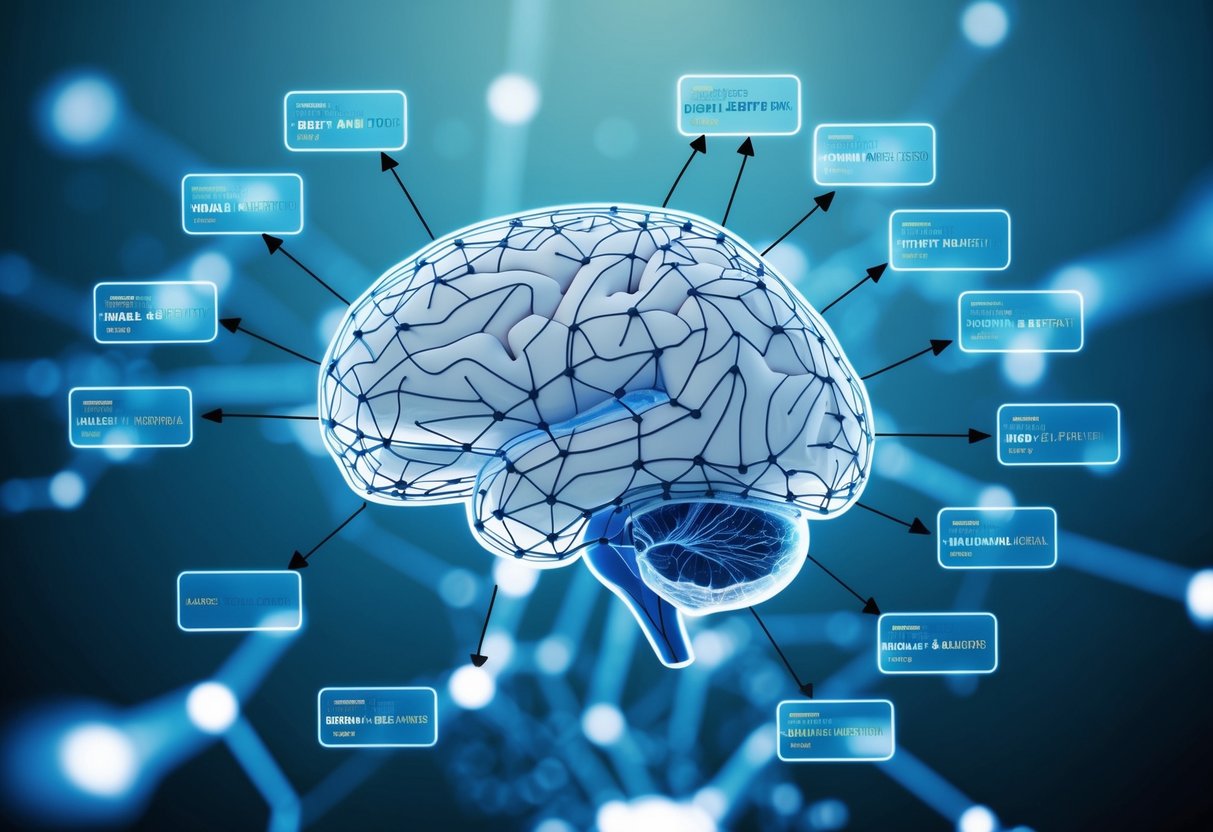
Neural Networks in Neuromorphic Computing
Neuromorphic computing aims to replicate the efficiency and functionality of the human brain. It incorporates neural networks that harness biological principles. These networks enhance computational performance and learning capabilities.
Spiking Neural Networks
Spiking Neural Networks (SNNs) emulate the way neurons in the brain send signals through discrete spikes. Unlike traditional neural networks, which use continuous signals, SNNs process information asynchronously. This characteristic allows SNNs to perform more efficiently in terms of energy consumption and speed, particularly in edge computing environments. SNNs hold potential for applications where real-time processing and low power usage are critical.
The spike-based approach enables SNNs to apply temporal dynamics and precise spike timing, facilitating complex pattern recognition. This is particularly relevant in fields like robotics and sensory data processing. While still developing, SNNs present an intriguing alternative to conventional models, leveraging the sparse and event-driven nature of neural computation in the brain.
Deep Neural Networks and Learning Methods
Deep Neural Networks (DNNs) form the backbone of many contemporary AI systems. In neuromorphic computing, DNN architectures are adapted to exploit specialized hardware for efficient learning and inference. This integration allows DNNs to manage large volumes of data while improving performance through unsupervised and reinforcement learning.
Unsupervised learning enables these networks to identify patterns without labeled data, which broadens their applicability. Reinforcement learning provides DNNs with a mechanism to improve through interaction with the environment, enhancing decision-making processes. These methods contribute to the evolution of AI systems capable of autonomous adaptation and learning, making DNNs crucial in the evolution of neuromorphic systems.
Efficiency and Energy Consumption

Neuromorphic computing presents promising advancements in power management and energy efficiency for artificial intelligence systems. By mimicking the efficient structures of the human brain, these technologies aim to drastically reduce power consumption, opening new possibilities for sustainable and scalable AI applications.
Power Efficiency in Neuromorphic Systems
Neuromorphic systems are designed to emulate the low power consumption of the human brain. Such systems reduce energy expenditure by processing information only when changes occur, which significantly lowers needless power usage. This feature makes them highly efficient for real-time data processing tasks.
One of the key elements contributing to this efficiency is the integration of neuromorphic sensors. These sensors act similarly to biological sensors in humans, processing information directly at the edge of the network. This avoids unnecessary data transfer and minimizes energy requirements. The design of these systems focuses on using analog circuits resembling neural networks, leading to significant energy savings.
Energy Consumption in AI
Energy consumption in traditional AI systems remains a major challenge, largely due to the high computational demands of deep learning models. Large data centers, running extensive computations, contribute to significant environmental impacts.
Neuromorphic computing offers a solution by transitioning to architectures that substantially decrease energy use. By implementing asynchronous event-based processing, these systems consume energy only during active data processing. This feature aligns closely with how biological systems function, providing potential pathways for developing more energy-efficient AI.
These advancements are critical in addressing the pressing need for eco-friendly technology. As energy efficiency becomes a priority in computing, neuromorphic systems hold promise for radically transforming AI’s environmental footprint.
Application Domains of Neuromorphic Computing
Neuromorphic computing finds its utility in various fields where mimicking the human brain can enhance performance and efficiency. It plays a vital role in areas requiring real-time processing and energy-efficient computations.
Robotics and Autonomous Systems
In robotics and autonomous systems, neuromorphic computing enables machines to process data similarly to how humans do. It aids in developing robots capable of learning from their environment, adapting to changes, and making autonomous decisions without constant human intervention.
These systems benefit from neuromorphic algorithms that enhance sensory processing and movement control. The efficiency and adaptability of neuromorphic architectures help in managing complex tasks with minimal power consumption. This makes robots more efficient in environments where conventional computers struggle.
Additionally, neuromorphic chips allow for swifter parallel processing of sensory inputs. This enables real-time reactions in dynamic environments, enhancing the functionality and autonomy of systems such as drones and self-driving cars. These advancements are crucial for the development and deployment of sophisticated autonomous technologies.